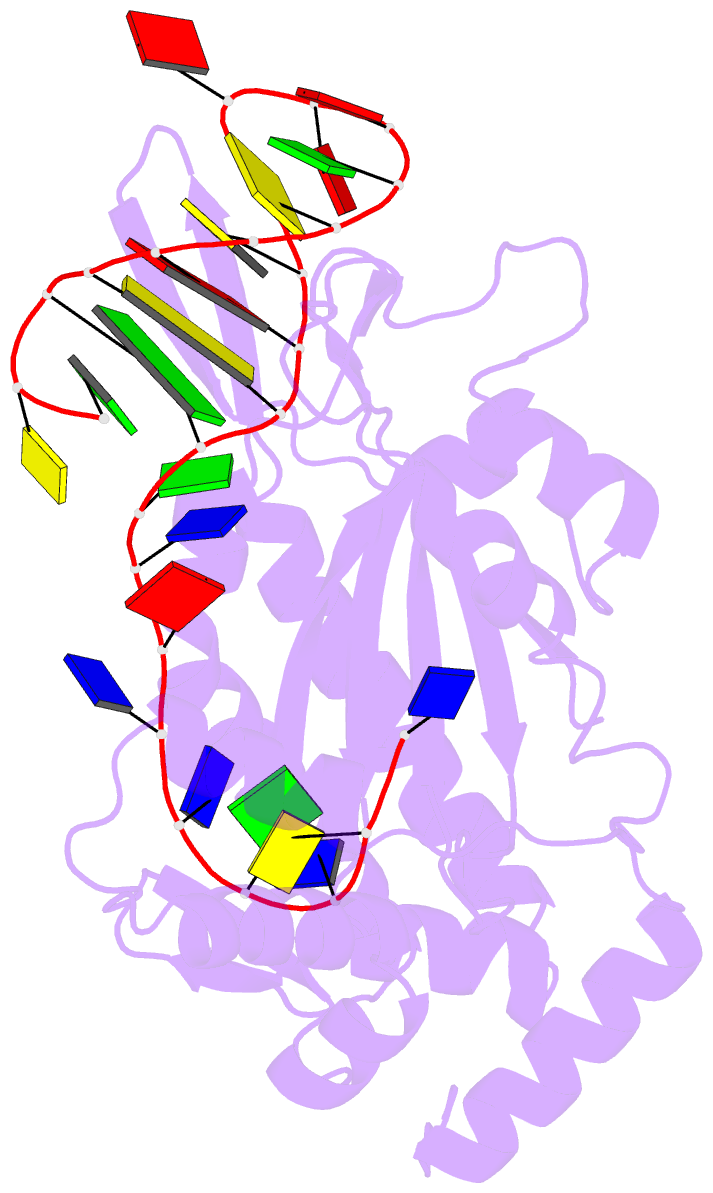Summary information and primary citation
- PDB-id
- 1qx0; SNAP-derived features in text and JSON formats;
DNAproDB
- Class
- transferase-DNA
- Method
- X-ray (2.26 Å)
- Summary
- Conjugative relaxase trwc in complex with orit DNA. metal-bound structure
- Reference
- Guasch A, Lucas M, Moncalian G, Cabezas M, Prez-Luque R, Gomis-Rth FX, de la Cruz F, Coll M (2003): "RECOGNITION AND PROCESSING OF THE ORIGIN OF TRANSFER DNA BY CONJUGATIVE RELAXASE TRWC." Nat.Struct.Biol., 10, 1002-1010. doi: 10.1038/nsb1017.
- Abstract
- Relaxases are DNA strand transferases that catalyze the initial and final stages of DNA processing during conjugative cell-to-cell DNA transfer. Upon binding to the origin of transfer (oriT) DNA, relaxase TrwC melts the double helix. The three-dimensional structure of the relaxase domain of TrwC in complex with its cognate DNA at oriT shows a fold built on a two-layer alpha/beta sandwich, with a deep narrow cleft that houses the active site. The DNA includes one arm of an extruded cruciform, an essential feature for specific recognition. This arm is firmly embraced by the protein through a beta-ribbon positioned in the DNA major groove and a loop occupying the minor groove. It is followed by a single-stranded DNA segment that enters the active site, after a sharp U-turn forming a hydrophobic cage that traps the N-terminal methionine. Structural analysis combined with site-directed mutagenesis defines the architecture of the active site.





